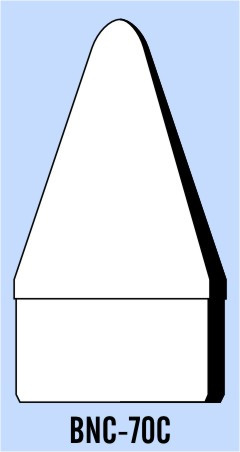d11rok
Well-Known Member
- Joined
- Nov 25, 2015
- Messages
- 126
- Reaction score
- 0
So let me lead with the story...
I was perusing Apogee's excellent website, and came across the "garage sale" area. I came across the 2 - 22.6mm/5.77" Tubes, which are " left over from the out of production Delta III kit."
So, I bought a pack of 6 in an attempt to perhaps rebuild the Delta III (probably one of the best performing rockets in real life, amirite?)
There are only 2 references I can find to the original kit (maybe they were separate?), which was put out by DRF Technologies (now Real Space Rockets, who make fantastic looking display models, btw). One comes from rocketreviews stating, "It is designed to be able to fly with 6 A10-PT motors and a core C6 motor in the main airframe. " Another comes from a review of the Apogee version of the discontinued product, which seems to have only used one motor.
hMy plan is to do something that in the end will look something like this :

I acknowledge that the fins are not part of the actual rocket; they are there for prevention of death by model Delta III
The top portion is BT70, the bottom portion that the booster sections are glued to is BT50. The rationale for these are: 1) The diameter of BT-50 + 2 booster tubes is approximately BT 70 and 2) 6 of the boosters can encircle a BT50 snugly enough, while leaving room for fins.
BT-5 tubes would be placed inside all or some of the apogee garage sale tubes (BT-26?). Why the 13mm? I dunno, seems simplest as historically it seems it launched on minis (plus, for reloading the thing, it coming in packs of 4 doesnt hurt at all). would be quite easy to deviate a bit, though.
Now the interesting thoughts I had for the whole build, let me know what you think or have any additional ideas that would be fantastic:
1) Load all boosters with an A10-PT (plugged), the main with a C6, with deployment of a parachute from the BT-70, as usual
2) Load 3 of the boosters with an A10-3T, load the other 3 boosters with small estes parachutes, and have a 3x rear-ejection. My preliminary simulations show that this would not be enough to slow it down, and thus a C6-3 would again be used to deploy a parachute from the BT-70
3) Load all boosters with an A10-3T, with rear-ejection of a parachute from the BT-50 tube
4) ??? (other suggestions)
Also, if anyone has the original kit instructions or dimensions, sharing is caring
This project will be thought of in-depth for a good amount of time, whilst I finish up the Cosmic Interceptor I'm currently working on, then the Partizon which is waiting in the hangar bay.
Thanks in advance!
I was perusing Apogee's excellent website, and came across the "garage sale" area. I came across the 2 - 22.6mm/5.77" Tubes, which are " left over from the out of production Delta III kit."
So, I bought a pack of 6 in an attempt to perhaps rebuild the Delta III (probably one of the best performing rockets in real life, amirite?)
There are only 2 references I can find to the original kit (maybe they were separate?), which was put out by DRF Technologies (now Real Space Rockets, who make fantastic looking display models, btw). One comes from rocketreviews stating, "It is designed to be able to fly with 6 A10-PT motors and a core C6 motor in the main airframe. " Another comes from a review of the Apogee version of the discontinued product, which seems to have only used one motor.
hMy plan is to do something that in the end will look something like this :
I acknowledge that the fins are not part of the actual rocket; they are there for prevention of death by model Delta III
The top portion is BT70, the bottom portion that the booster sections are glued to is BT50. The rationale for these are: 1) The diameter of BT-50 + 2 booster tubes is approximately BT 70 and 2) 6 of the boosters can encircle a BT50 snugly enough, while leaving room for fins.
BT-5 tubes would be placed inside all or some of the apogee garage sale tubes (BT-26?). Why the 13mm? I dunno, seems simplest as historically it seems it launched on minis (plus, for reloading the thing, it coming in packs of 4 doesnt hurt at all). would be quite easy to deviate a bit, though.
Now the interesting thoughts I had for the whole build, let me know what you think or have any additional ideas that would be fantastic:
1) Load all boosters with an A10-PT (plugged), the main with a C6, with deployment of a parachute from the BT-70, as usual
2) Load 3 of the boosters with an A10-3T, load the other 3 boosters with small estes parachutes, and have a 3x rear-ejection. My preliminary simulations show that this would not be enough to slow it down, and thus a C6-3 would again be used to deploy a parachute from the BT-70
3) Load all boosters with an A10-3T, with rear-ejection of a parachute from the BT-50 tube
4) ??? (other suggestions)
Also, if anyone has the original kit instructions or dimensions, sharing is caring
This project will be thought of in-depth for a good amount of time, whilst I finish up the Cosmic Interceptor I'm currently working on, then the Partizon which is waiting in the hangar bay.
Thanks in advance!







